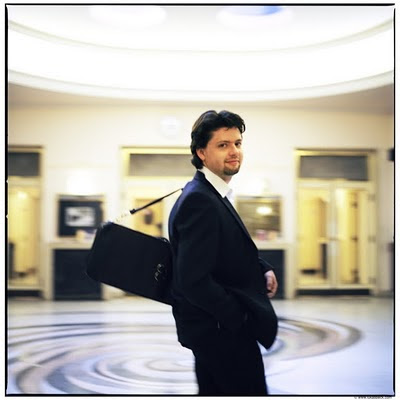Academy of St. Martin in the Fields with Julian Rachlin

The first impression of this chamber orchestra, founded in 1958 by Sir Neville Marriner, is their warm, easy string sound. Whether this resonance is due to the quality of their instruments or the quality of their playing is to be determined; however, it is likely a splendid combination of the two. The opening Prelude from Grieg’s neo-classical Holberg Suite provided a Proustian moment of recollection, with a soaring melody above an active accompaniment and gentle pizzicato from the lower strings. The sweet Air (Andante religioso) movement was always in time, yet well shaped. Perhaps the time taken for the ensemble to sense when all sections are ready to make an attack or release causes a flexibility preventing them from rushing through anything.
Beethoven’s Sonata No. 9 in A Major (”Kreutzer”) provided lots of material for the orchestra to dig into, as well as the flying horsehair from Rachlin’s bow. Though the orchestra was disjointed for a few moments with the viola principal looking around for help, overall there was an abundance of communication between soloist-director (from his central perch from which he would at times turn 360 degrees) and orchestra. Rachlin’s violin playing is always clear, no matter how aggressively he pursues a figure, and he uses vibrato as a special tool instead of a given. The second movement of Richard Tognetti’s arrangement featured many chamber-like moments that were highly effective, with Rachlin’s pizzicato notes as forceful as cracked whips.
Joan Reinthaler, Transcriptions for string orchestra are out of balance (Washington Post, April 20) Wynne Delacoma, Rachlin and Academy deliver fiery take on Piazzolla’s “Four Seasons” (Chicago Classical Review, April 8) |
You can take a look at this preview of next year's season at George Mason. Our picks for highlights in 2010-11 include visits by the Deutsche Staatsphilharmonie (January 29), the Mark Morris Dance Group (February 4 and 5), Opole, Philharmonic of Poland (February 12), and the Orpheus Chamber Orchestra with Arabella Steinbacher (April 23), along with another chance to see the Waverly Consort's classic The Christmas Story (December 10).





















































No comments:
Post a Comment